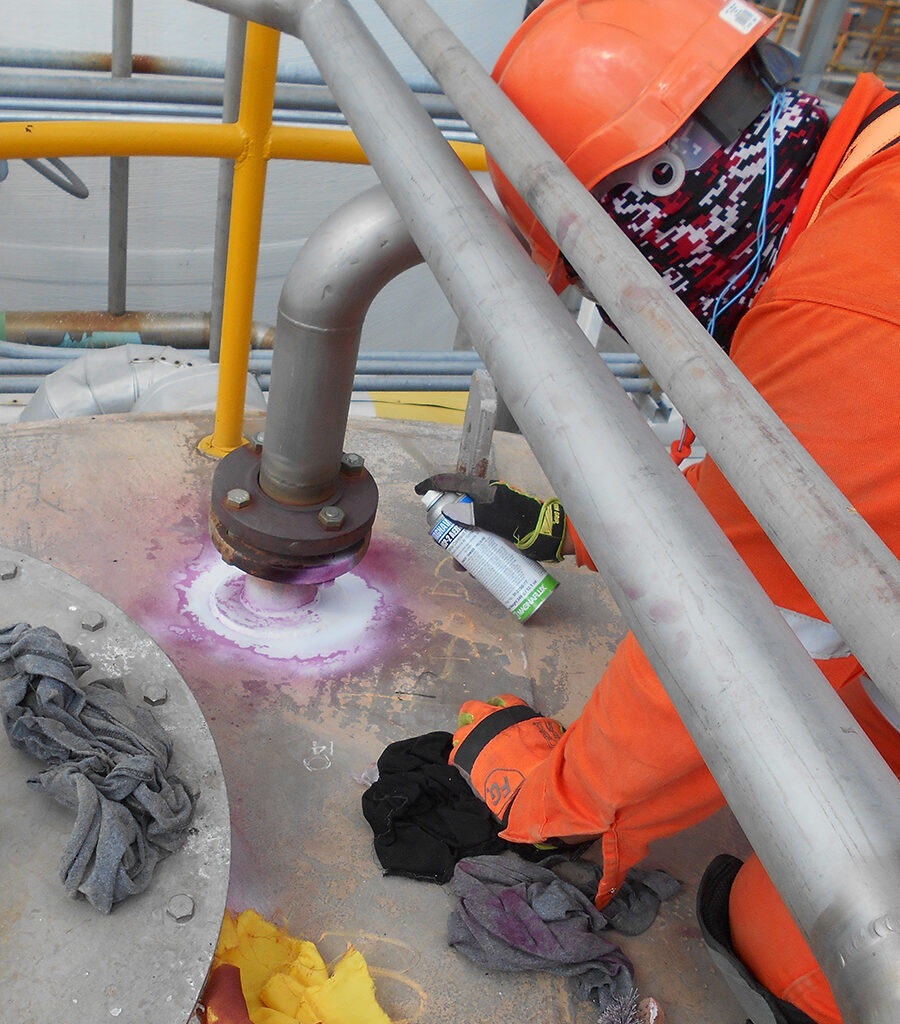
Inspection by Penetrating Liquids is a type of non-destructive test with which it is possible to detect surface imperfections in non-porous materials, both in metallic materials and in non-metallic materials.
This type of test basically consists of applying a liquid with great wetting power on the surface of the material to be tested. Thanks to the effect of capillarity, it will penetrate into the discontinuities.
The procedure consists of applying a colored or fluorescent liquid to the surface under study, which penetrates any discontinuity that may exist due to the phenomenon of capillarity. After a certain time, the excess liquid is eliminated and a developer is applied, which absorbs the liquid that has penetrated the discontinuities and on the developer layer the contour of these is outlined.
Penetrating Liquids

Advantages
Disadvantages
- This type of test is very economical, since it does not require large machinery for its correct performance.
- It is very simple to perform and this allows it to be developed almost anywhere, since it does not require very specific conditions.
- Inspection tests for penetrating liquids stand out for the speed of the process and the possibility of giving immediate results. At the same time, they are performed, the first diagnosis can be made.
- Can be made of many materials, including materials that are not ferrous or metallic. The only requirement is that they be non-porous materials.
- This type of Non-Destructive Testing cannot be performed on materials that are porous. The very porosity of the material can confuse the test results.
- These tests only serve to analyze the surface of the objects to be studied. They could not be used to analyze imperfections located elsewhere.
- If the surface of the part is not in perfect cleaning condition, the test may result in errors. Hence, it is essential to carry out a thorough cleaning of the material before carrying out the inspection.